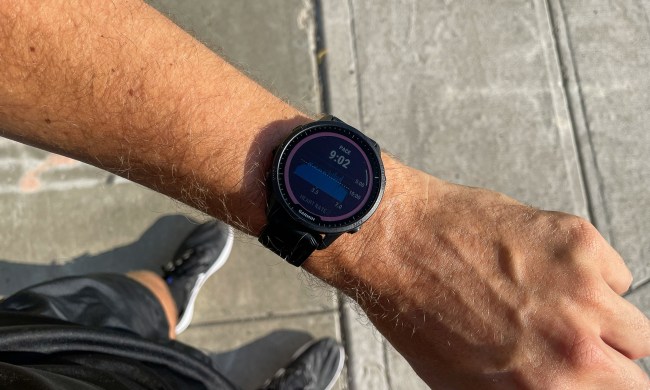Drones are pretty darn awesome, but that’s not to say they can’t also be troublemakers. Whether it’s delivering contraband to individuals in prison, risking people’s safety by straying into flight paths, or breaching security by snapping photos and video where they’re not allowed, it’s easy to see why there would be demand for anti-drone technologies.
Fortunately for gadget lovers, some of these approaches are every bit as high-tech as the UAVs (unmanned aerial vehicles) they’re designed to bring down.
Here are seven of the most intriguing pieces of anti-drone technology in existence right now. And no, sadly you probably can’t buy most of them as a regular civilian with an eye on annoying your drone-owning next door neighbors.
DroneGun
With a name like “DroneGun,” there’s not too much apparent mystery about this solution — although it’s a bit more nuanced than its blunt force trauma name makes it sound.
Developed by Australian company DroneShield, this bazooka-looking creation works by jamming the signal between drone and drone pilot, thereby grounding unwanted UAVs. The anti-drone weapon tips the scale at 13 pounds, and is reportedly capable of warding off rogue quadcopters from up to 1.25 miles away.
ATHENA
Forget about puny handheld anti-drone weapons: defense giant Lockheed Martin wants to blast offending UAVs out of the sky by using a specially developed giant laser tower like we’re living in the future.
Called ATHENA (Advanced Test High Energy Asset), a 30-kilowatt version of the laser weapon has already been shown off in demos to the U.S. Army Space and Missile Defense Command, where it fried the heck out of five Outlaw drones.
The final version of ATHENA promises to fire anywhere up to a 120-kilowatt laser blast, should your drone problem be big enough.
DroneCatcher
As satisfying as frying drones in midair with a giant laser might be, there are, unfortunately, occasions on which it might not be appropriate. One example? When a drone is being used in restricted areas, and you want to be able to ground it without losing potentially incriminating evidence.
That’s where Dutch firm Delft Dynamics’ DroneCatcher comes into play. DroneCatcher is essentially an anti-drone drone, capable of locking onto an enemy UAV in the air and then catching it in a net from up to 20 meters away.
SkyWall 100
Like a ground-based version of DroneCatcher, SkyWall 100 is a net-launching bazooka that promises to bring down an enemy drone from 100 meters away.
Weighing 22 pounds, the shoulder-mounted cannon uses compressed air to fire its net. To keep the drone in one piece (for all the reasons we mentioned in the last entry), it then deploys a parachute to return its vanquished foe to terra firma.
Heck, it even helps out its operator by using predictive algorithms to help lock on to drones which may be moving at high speeds.
Sky Fence
Drones pose a real threat to prison security, since they’re capable of easily flying over walls and delivering contraband to folks behind bars. With that in mind, a prison in the U.K. this year installed 2,000-foot “drone shield,” designed to incapacitate law-defying quadcopters.
The Sky Fence system incorporates a number of signal disruptors, designed to jam the flight control signal of drones as they fly by. More impressively, it then makes the drone fly back to where it took off from, giving officers the chance to seize the offending pilot.
Eagle power
Remember that scene in Family Guy in which Peter’s new drone was plucked out of the air by an eagle? It may sound crazy, but that’s exactly the low-tech solution that Dutch cops showed off in early 2016, when they demonstrated how UAVs were no match for the sharp talons and eyesight of one of nature’s most awesome flying predators.
What could possibly go wrong, right? Unfortunately it turns out that the eagles didn’t always do what was expected of them during training sessions, leading to the retirement of this particular approach. We’re not sure whether to chalk this up as a win for nature or machine. We totally give them props for trying, though!
Drone malware
Hacking an enemy drone in midair, before it can do any damage, totally sounds like a set piece from one of the Mission: Impossible movies. In fact, it’s the real world concept behind Maldrone, a security vulnerability demonstrated by researcher Rahul Sasi. The malware can be used to remotely hijack drones, kill the on-board autopilot, and then take control remotely.
The process may not be quite so smooth or instantaneous as some of the other approaches on this list, but there’s certainly something poetic about bringing down a drone with its own vulnerabilities. Hey, it’s not like you’ve always got a net-shooting bazooka when you need one!


